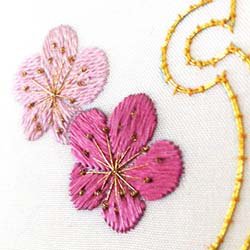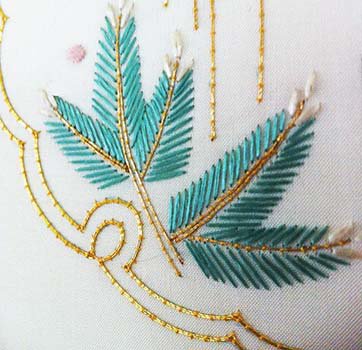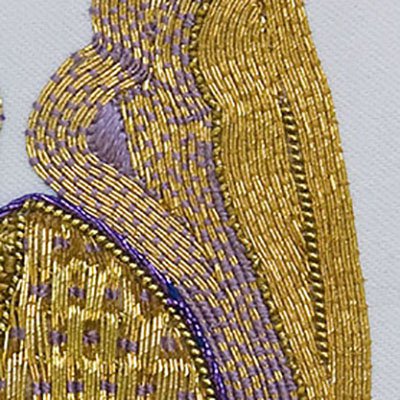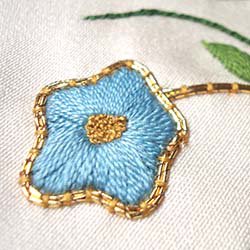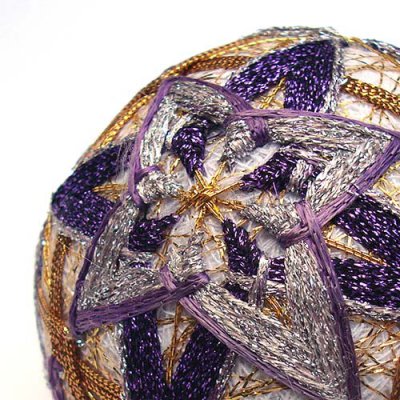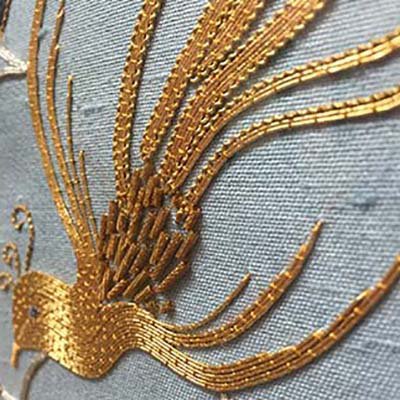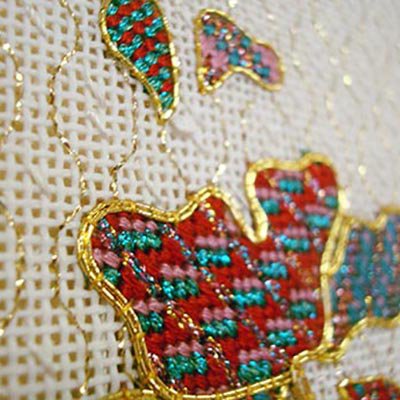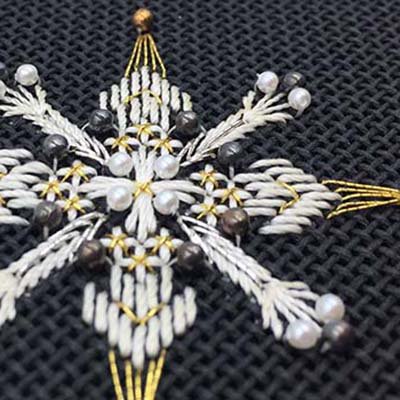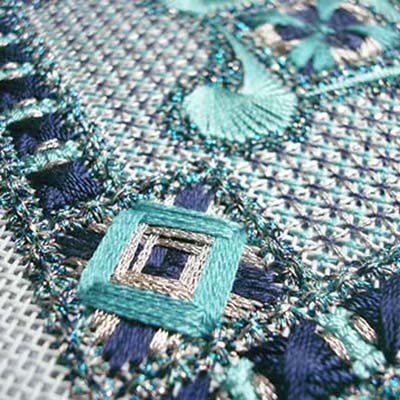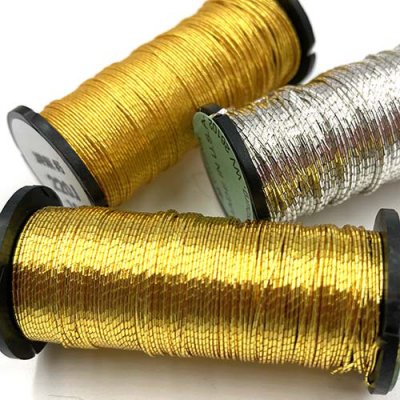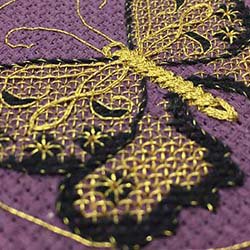The History Of Japan Threads
Historically, Japan thread embroidery began in China with gold, silver, and copper metalwork. Gold and silver yarns were made by pounding gold and silver stock into extremely thin leaf, which was sliced into very narrow strips and then rolled around a core and twisted into yarn. With time, the gold yarn was modified to a gilt yarn, which was silver with a gold overlay.
The Japanese later developed a method of making metal threads by depositing a coating of gold or silver on rice paper, which was then cut into fine strips and wrapped around a thread core. This became known as Japan Gold or Japan Silver. However, dampness caused the rice-paper backing to deteriorate. Modern technology has eased the process of making Japan threads, and Kreinik now offers Japan Threads in a variety of thread sizes for hand and machine embroidery.
Kreinik Japan Threads are synthetic, non-tarnishing gimps available in gold, dark gold, silver and copper that give the appearance of stitching with real gold, silver or copper. Since real metal threads are rare and expensive, Japan Threads are an ideal substitute. Japan Threads are available in Super Fine #1, Fine #5, and Medium #7 sizes, also Very Fine, Fine, Tapestry, and Medium Braids plus 1/16" and 1/8" Ribbons and 3/8" Trim.
Japan threads in the Kreinik line are indicated by a "J" following the color number, as in 002J.



